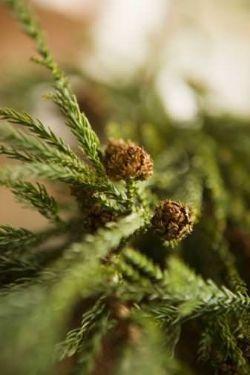Ecological Christmas tree
Post from EditorialsThe charm and the scent of an authentic fir are extraordinary, but the alternative is to get an environmentally friendly tree or, in simpler words, fake.
History and Legend of the Christmas Tree
The Christmas trees tradition was born in the sixteenth century in Germany and from there spread first in the North and later in the South of Europe. Today the Christmas tree is a custom widespread almost all over the world. .jpg) For the Germanic peoples, the evergreen fir was a symbol of birth and life.
For the Germanic peoples, the evergreen fir was a symbol of birth and life.
These peoples were accustomed oto decorate it with garlands at the winter solstice and on December 24th, to celebrate the return of the sun and the rebirth of nature.
Today, however, it is customary to decorate it on the 8th of December, the day of the Immaculate Conception.
The legend says that long ago, on the eve of Christmas, a German, returning home, noticed the stars shining through the branches of a fir tree.
The show seemed so beautiful that he wanted to show it to all of his family. Cut down a small tree, brought it home and adorned it with lighted candles.
That is how spread the custom of the Christmas tree, now found in all homes.
In fact, even in the twenty-first century, this symbol of Christmas resists, rather spreads more and more.
Christmas tree: real or artificial?
Among the characteristics that lead to the choice of the Christmas tree, first you need to decide if you want to buy a natural or an artificial Christmas tree..jpg) What is certain is that the charm and the scent of an authentic fir are extraordinary, but the living room is not always a suitable environment for this kind of plants.
What is certain is that the charm and the scent of an authentic fir are extraordinary, but the living room is not always a suitable environment for this kind of plants.
Conifers, in this time of year, are dormant.
The heat of a flat artificially stimulates the vegetation.
When the holidays are over, the trees are put outside in the cold, they are not able to withstand the thermal shock, and they die, explains Alberto Guzzi, official of the State Forestry Corps.
A small fir tree, fifty centimeters, has a limited root system and, therefore, has a better chance of survival.
Anyway, we must follow some precautions: put it in the house at the last moment, and for no more than 3 or 4 days, place it in an area not too hot, wet it often. And then, finished the holidays, bring it back immediately outdoors.
Alternatively, there are conifers belonging to the Picea variety, grown in the nursery especially for Christmas.
They are sold with a few roots and after the holidays are thrown away. They do not cause damage to nature because they come from nurseries. Nurseries also sell large firs and pines, but these, as they should explain to all customers, can not possibly be in the apartment.
Nurseries also sell large firs and pines, but these, as they should explain to all customers, can not possibly be in the apartment.
A quite ecological alternative are the treetops, the tips of the big trees cut during the regular cleaning of the plants.
In any case, those who buy a Christmas tree, must always be sure of its origin.
The tree must come from nurseries or controlled logging operations, recommended the Forestry Corps, so having a regular card of the company that has grown or a hose with the year and the region of origin.
This also applies to the treetops.
Those who buy a certificate-free fir, do damage to nature and risk a penalty.
Ecological Christmas tree
The alternative is the ecological tree or, in simpler words, fake.
Once there were shoddy products, but today you can buy perfect imitations and, if desired, even more imaginative and decorative.
The artificial Christmas tree, in addition, can be reused for many years; just put it in the case and store it for next year.
The artificial Christmas trees can be cheaper and do not cause discomfort to those who suffer from allergies to conifers; may be of different colors, white, silver, gold, small or huge, music, moving, already decorated.
In times of alarm for the health of the planet, there are even Christmas trees made with the recycling of plastic materials such as, for example, bottles.
The plastic bottles are very damaging to the environment, but unfortunately very used.
A few years ago, in Sydney, Australia, somebody made in Rock Area a majestic Christmas tree, almost ten meters high, made entirely with green plastic bottles.
The same choice was made in Paris, which has a square decorated with many Christmas trees also made with recycled plastic bottles.
79873 REGISTERED USERS










